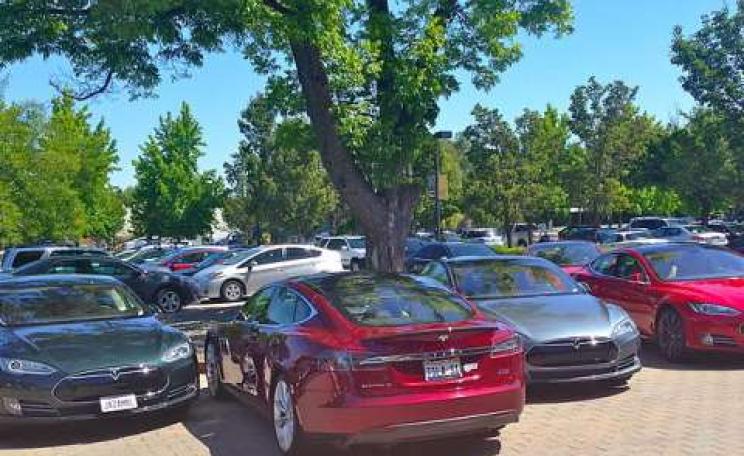With much fanfare and back-patting, Tesco recently announced it had become the ‘first major UK retailer to start transporting freight by canal’. The scheme is simple: wine shipped from as far away as Australia, Chile and California is unloaded at Liverpool on to a barge, which is gracefully pushed along at a top speed of 4mph. Ten hours and 40 miles later, the wine reaches Manchester, where it is unloaded, bottled and distributed to Tesco supermarkets across the UK. This process, says Tesco, cuts C02 emissions by a Kyoto-friendly 80 per cent. It also takes 50 lorries per week off the road, resulting, apparently, in a staggering 1.1 million fewer kilometres being driven by heavy goods vehicles – though Tesco wouldn’t clarify how it arrived at this figure.
The Tyndall Centre for Climate Change reports that there is a definite reduction in C02 when road transport is replaced by water, with figures that can be generously rounded up to 80 per cent. Sulphur and nitrogen oxide emissions are also reduced, but not as significantly. Importantly, perhaps, this scheme also offers Tesco a small but significant saving on road transport costs. All things considered, with this project, Tesco is reducing its carbon footprint.
Sainsbury’s tried waterway transportation a few months earlier, delivering daily stock to its west London store from a depot in south-east London via the Thames. The trial successfully showed ‘freight moves faster on the river than on Central London’s roads’ and that free energy can be harnessed using the tides. Without the support of companies such as the Seaborn Container Line, however, which provides the barge service used by Tesco, or the Peel Group, which runs the Port of Liverpool and the Manchester Shipping Canal, Sainsbury’s was unable to continue the scheme, though it believes it would be a viable option with suitable commercial partners investing in waterway infrastructure. Tesco has also said it is investigating using more inland waterways more, but couldn’t say when or where.
Elsewhere, there is clear support for this type of transportation. British Waterways, which oversees a 2,000-mile network of rivers and canals, foresees the rebirth of waterway freight transportation as a green, economical substitute for rail or truck. Also pressuring the Government to support waterway transport is the Inland Waterways Association. Parliament, too, agrees with this vision: the Environment, Food and Rural Affairs Committee recently recommended the Government set up a carbon credit scheme to promote the use of inland waterways for freight. Its response was firmly apathetic, asking a working group to judge the merits of setting up another group to promote the use of waterways.
Optimists say the Government hasn’t actively put the brakes on this mode of transport, though. Indeed, they cite the Olympics as a Governmentled opportunity to use inland waterways; investment is being injected into the Prescott Channel and surrounding area to make possible the delivery of construction materials along the Thames. The hope is that this will catalyse use of waterways elsewhere. Unfortunately, the Olympic planners have bundled the use of railways into their targets, leaving the possibility of only symbolic use of water transport.
But the Government recently missed a prime opportunity to promote the use of waterways. Bafflingly absent from the recent Department for Transport paper ‘Towards a Sustainable Transport System: Supporting Economic Growth in a Low Carbon World’ was any reference to canals or rivers. Its authors chose instead to focus on railways, technology and cutting congestion to reduce the carbon emissions of Britain’s freight.
Frank Robotham, marketing director of Peel Ports, sees further contradictions in the Government’s current plans. Big investment is ploughed into southern ports, roads and railways around areas such as Southampton and Felixstowe, but any serious attempt to reduce the number of lorries on our roads should see northern ports such as Liverpool receive more imports. Using boats and barges to get goods as close to their destinations as possible can drastically reduce CO2and other emissions.
The real limit to waterway freight, however, is not apathy or lack of investment, but problems of a more inherent nature. Waterway freight is slow and there are only a limited number of locations to which goods can be delivered. Goods that are recommended explicitly by British Waterways fall into three categories: abnormal loads (parts of the Drax power station, for example), bulk goods (such as liquids, aggregates and construction materials) and waste.
British Waterways is not only responsible for the use of freight on waterways, however, but also tourism, recreation and watersidedevelopment. It owns a property empire worth in the region of £450 million and is currently redeveloping further waterside land. Waterways also attract millions of visitors, tourists who spend £1.5 billion a year at businesses around the canals and rivers – including those in which British Waterways itself has significant financial stakes, such as the Falkirk Wheel in Scotland, or the Standedge Tunnel in the Pennines. It is in these areas that British Waterways raises a significant amount of its revenue. Recent comments from the Environment, Food and Rural Affairs Committee on the company’s commercial viability suggested increased opportunities for generating revenue from tourism and leisure have led to a ‘general lack of commitment to expanding freight use on the waterway, and it recently closed its central freight department’. With so much more money available to British Waterways in other areas and diminishing Government support, it is little surprise it is shifting its focus away from freight.
Waterways offer a proven and effective way of reducing environmentally damaging emissions. Despite several limiting factors, with innovation, investment and Government action, the system can be used effectively. With the main possibilities falling in the construction and waste sector, however, it prompts a simple question: what happens if we live less wasteful lifestyles and halt our desire to build to the sky?
Tom Savory is a freelance journalist.
This article first appeared in the Ecologist February 2008




